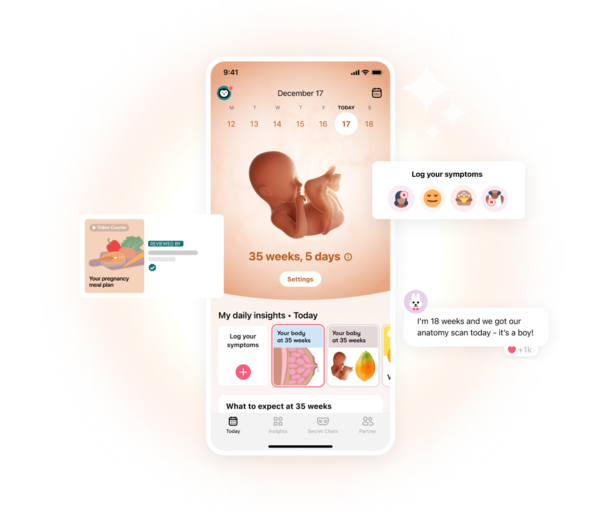Pelvic congestion syndrome, also known as pelvic venous congestion syndrome, is a medical problem that negatively impacts the veins in that region. Read on for more detailed information regarding pelvic congestion syndrome and the best ways to tackle it.
-
Tracking cycle
-
Getting pregnant
-
Pregnancy
-
Help Center
-
Flo for Partners
-
Anonymous Mode
-
Flo app reviews
-
Flo Premium New
-
Secret Chats New
-
Symptom Checker New
-
Your cycle
-
Health 360°
-
Getting pregnant
-
Pregnancy
-
Being a mom
-
LGBTQ+
-
Quizzes
-
Ovulation calculator
-
hCG calculator
-
Pregnancy test calculator
-
Menstrual cycle calculator
-
Period calculator
-
Implantation calculator
-
Pregnancy weeks to months calculator
-
Pregnancy due date calculator
-
IVF and FET due date calculator
-
Due date calculator by ultrasound
-
Medical Affairs
-
Science & Research
-
Pass It On Project New
-
Privacy Portal
-
Press Center
-
Flo Accuracy
-
Careers
-
Contact Us
Pelvic Congestion Syndrome: A Comprehensive Overview


Every piece of content at Flo Health adheres to the highest editorial standards for language, style, and medical accuracy. To learn what we do to deliver the best health and lifestyle insights to you, check out our content review principles.
What is pelvic congestion syndrome?
Pelvic congestion syndrome (PCS) is a painful disorder affecting between 10–15 percent of women in the U.S. It results in persistent lower abdominal pain and appears especially common in those who previously gave birth or have a family member with PCS. Apparently, the pelvic congestion syndrome risk further increases after multiple births.
Note that pelvic venous congestion syndrome correlates with varicose veins in your abdomen. Varicose veins are distorted, twisted, or lengthened veins ‒ the capabilities of which have been compromised.
Pelvic congestion syndrome symptoms
Pelvic congestion syndrome symptoms may not present until you become pregnant and can worsen as your uterus expands, and abdominal blood flow increases. The main symptom of PCS is pelvic pain, which also happens to be a common side effect of pregnancy. As such, pelvic congestion syndrome often goes undiagnosed for some time. Note that the pain tends to worsen throughout the day, particularly if you stand or sit still for extended periods.

Take a quiz
Find out what you can do with our Health Assistant
Furthermore, delivery won’t necessarily prompt PCS to resolve itself. Many patients notice more intense abdominal pain while menstruating, during or after sex, or following strenuous activities like biking or horseback riding.
Other typical symptoms of PCS include:
- Painful menstrual cramps
- Abnormal period bleeding
- Backaches in the lumbar region
- Fatigue
- Varicose veins in other places, like your vulva, legs, and buttocks
- Frequent urination
- Irritable bowel syndrome (IBS)
- Tenderness in your lower abdomen
Not every woman will experience all of these symptoms, and the intensity will vary as pelvic venous congestion symptoms ebb and flow.
Pelvic congestion syndrome causes
The reason for the formation of varicose veins in your lower abdomen is unclear. It’s thought that pregnancy encourages their development due to major body changes and physical strain on your pelvis. Combined with extra blood flow to the area, it leads to the collection of blood and other fluids. Lastly, the hormonal imbalances of pregnancy, not to mention the added weight, exacerbate the situation.
When pelvic congestion syndrome develops, the valves in your veins no longer function the way they’re supposed to, slowing down blood flow. This, in turn, produces vein congestion, swelling, and enlargement. Your veins simply can’t cope with the demands of moving these excess fluids and eventually sustain damage.
Contributing factors for pelvic congestion syndrome
Since there’s a link between pregnancy and PCS, women who have had multiple children carry a greater pelvic congestion syndrome pregnancy risk. Your likelihood of developing pelvic congestion syndrome also increases when there’s a family history of it.
Diagnosis of pelvic congestion syndrome
As far as diagnosis, your doctor will ask about the duration of your pelvic pain and its location. Often, patients notice that their left side feels worse and that the discomfort has lasted for at least six months.
Isolation of pelvic congestion syndrome isn’t always easy since pelvic and ovarian pain points to numerous female reproductive issues. They’ve also been associated with problems in your GI tract and even clinical depression.
Expect a pelvic exam to be performed and prepare yourself to answer questions regarding your medical history. Next, your doctor might recommend the following tests:
- Urine tests to check for bladder infections
- Blood tests to detect STDs, pregnancy, anemia, etc.
- A pelvic ultrasound to search for growths
- A Doppler ultrasound to examine blood flow in your pelvic veins
Depending on the results of your pelvic congestion syndrome ultrasound, a CT scan, MRI, or diagnostic laparoscopy are also a possibility. They’ll provide more detailed visuals of your pelvic region and help eliminate other sources of pain.
Pelvic congestion syndrome treatment
Once you’ve been diagnosed with PCS, your doctor will start pelvic congestion syndrome treatment. Gonadotropin-releasing hormone medication, which blocks ovarian function, could serve as a pain reliever. Alternatively, you may be prescribed progestin to alleviate your symptoms.
If medications prove ineffective, certain procedures might reduce the stress on your veins or shut off the damaged ones, including sclerotherapy or embolization.
Pelvic vein embolization (PVE) is the most common approach to battling PCS. It’s a minimally invasive procedure that blocks off problematic varicose veins in your pelvis. Depending on the severity of your case, this procedure is either a same-day outpatient visit or an overnight hospital stay.
When pelvic congestion syndrome is extremely serious, surgery may be required to remove damaged veins, ovaries, and/or your uterus. The latter is known as a pelvic congestion syndrome hysterectomy.
When to see a doctor
Whenever you experience chronic pelvic pain, especially if it gradually worsens, you should see your doctor. This also applies if your pain is continual, meaning it never fully goes away and becomes more intense as the day progresses.
While pelvic congestion syndrome isn’t generally a life-threatening medical emergency, it’s not going to resolve on its own. If you’re wondering, “can you die from pelvic congestion syndrome?,” the answer is no. Just remember that it’s characterized by general pain, not a sharp, stabbing pain. So if you observe the latter, please seek emergency care right away.
Living with chronic pain or dealing with the frustration of diagnosis can take a toll on your mental health, creating stress and feelings of depression. It’s especially difficult when you’re pregnant. Consider talking to a counselor or joining group therapy to get through it.
Takeaway
Pelvic congestion syndrome is a painful disorder brought on by the formation of varicose veins around your ovaries and uterus. It may be attributed to biological changes during pregnancy or might simply develop on its own. If you’re of childbearing age and have given birth to one or more babies, your chances of developing pelvic congestion syndrome are significantly higher.
While PCS is treatable, proper diagnosis takes time. Once your doctor has confirmed it, they’ll likely begin pelvic congestion syndrome treatment with hormonal medications, and possibly surgery.


Hey, I'm Anique
I started using Flo app to track my period and ovulation because we wanted to have a baby.


The Flo app helped me learn about my body and spot ovulation signs during our conception journey.


I vividly
remember the day
that we switched
Flo into
Pregnancy Mode — it was
such a special
moment.
Real stories, real results
Learn how the Flo app became an amazing cheerleader for us on our conception journey.
References
History of updates
Current version (25 May 2020)
Published (25 May 2020)
In this article

Get your personal guide to pregnancy with the Flo app
-
Follow your baby's growth week by week
-
Get expert info on symptoms, safe foods, and more
-
Chat with other parents-to-be




